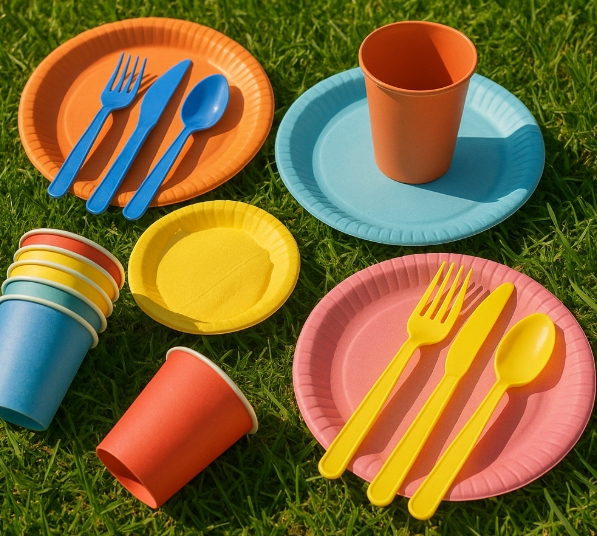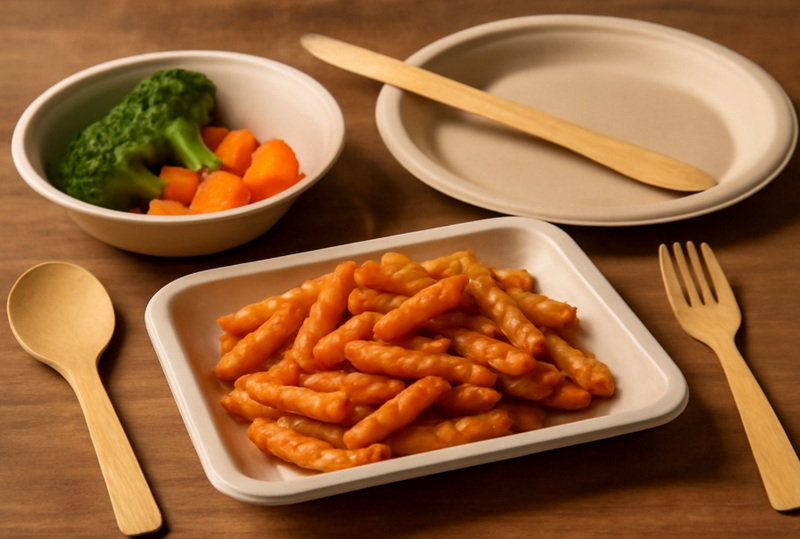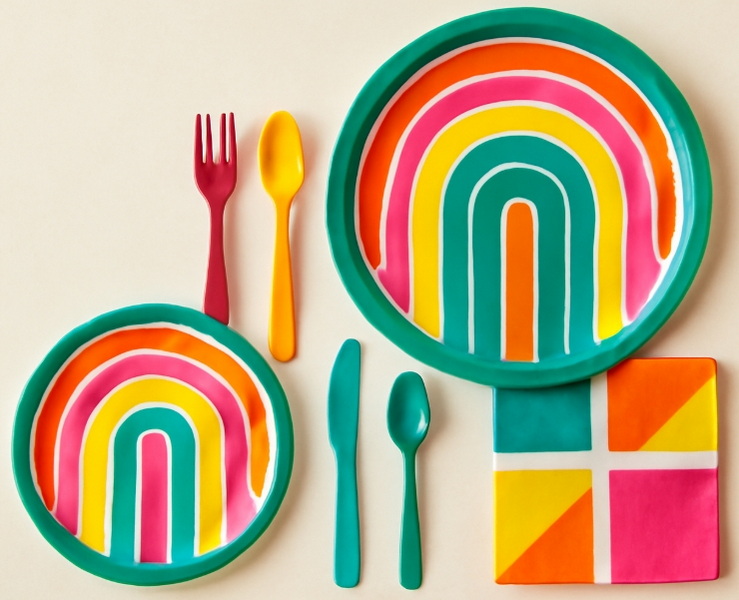
Content Menu
● Introduction
● Market Overview: Disposable Cutlery in the U.S.
● Top Disposable Cutlery Manufacturers and Suppliers in the United States
>> Anchor Packaging Inc.
>> Dart Container Corporation
>> Genpak, LLC
>> Pactiv LLC
>> WOW Plastics, Inc.
>> Georgia-Pacific LLC
>> SmartPack USA, Inc.
>> CiboWares
>> Green Paper Products
>> World Centric
>> Additional Notable Suppliers
● Manufacturing Processes: How Disposable Cutlery is Made
>> Plastic Cutlery Production
>> Wooden and Bamboo Cutlery Production
>> Compostable Bioplastics (PLA and CPLA) Production
● Materials and Sustainability Trends
>> Plastic Cutlery
>> Wooden and Bamboo Cutlery
>> Compostable Bioplastics (PLA and CPLA)
>> Sustainability Case Studies
● Choosing the Right Supplier: Key Considerations
>> Material Options
>> Customization
>> Certifications
>> Production Capacity
>> Lead Times and Logistics
>> Competitive Pricing
>> Sample Availability
● Conclusion
● Frequently Asked Questions
>> 1. What materials are most commonly used for disposable cutlery in the U.S.?
>> 2. Can disposable cutlery be recycled or composted?
>> 3. How can I customize disposable cutlery for my brand?
>> 4. What certifications should I look for in eco-friendly cutlery?
>> 5. What are the current trends in disposable cutlery manufacturing?
Disposable cutlery has become an essential component of the modern foodservice and hospitality industries, providing convenience, hygiene, and versatility for a wide range of applications. From fast food outlets and takeout services to large-scale catering events, disposable cutlery manufacturers and suppliers in the United States play a pivotal role in meeting the ever-evolving needs of businesses and consumers alike. As sustainability and customization take center stage, the market has expanded to include not only traditional plastic options but also innovative eco-friendly alternatives. This comprehensive guide explores the leading disposable cutlery manufacturers and suppliers in the U.S., the latest industry trends, manufacturing processes, and key considerations for buyers.

Introduction
Disposable cutlery—single-use forks, knives, and spoons—has transformed the way food is served and enjoyed across the United States. Driven by the need for convenience and hygiene, the disposable cutlery industry has evolved rapidly, offering a diverse array of products to suit every occasion. With increasing awareness of environmental issues, manufacturers and suppliers are now innovating to provide sustainable solutions that do not compromise on functionality or aesthetics.
Market Overview: Disposable Cutlery in the U.S.
The U.S. disposable cutlery market is robust and dynamic, characterized by a wide range of materials, end-users, and product innovations. Key features of the market include:
- Material Diversity: Products are available in plastic (such as polystyrene and polypropylene), wood (birch and bamboo), and compostable bioplastics (PLA and CPLA).
- Broad Customer Base: Restaurants, cafeterias, catering companies, retail outlets, and event organizers all rely on disposable cutlery.
- Sustainability Focus: There is a growing demand for eco-friendly, compostable, and biodegradable options as both businesses and consumers seek to reduce their environmental impact.
- Customization: Many suppliers offer custom branding and packaging to help businesses stand out in a competitive market.
The market includes both large-scale national manufacturers and specialized suppliers focused on sustainable or custom solutions. As regulations on single-use plastics tighten in many states and cities, the industry is seeing a significant shift toward environmentally responsible products.
Top Disposable Cutlery Manufacturers and Suppliers in the United States
A number of reputable companies dominate the U.S. market for disposable cutlery, each offering unique strengths and product lines. Here is an overview of the most prominent disposable cutlery manufacturers and suppliers:
Anchor Packaging Inc.
Anchor Packaging is a leader in food packaging solutions, offering a wide range of disposable cutlery made from both conventional plastics and eco-friendly materials. Known for its innovation and strong distribution network, Anchor Packaging provides products that combine durability with attractive design, making them a popular choice for restaurants and foodservice providers nationwide.
Dart Container Corporation
As one of the largest manufacturers of single-use foodservice products, Dart Container Corporation boasts a comprehensive line of disposable cutlery. With a nationwide presence and an extensive product portfolio, Dart is a go-to supplier for plastic forks, knives, spoons, and straws, serving both large chains and independent businesses.
Genpak, LLC
Genpak specializes in disposable food packaging, including a variety of cutlery options for foodservice applications. The company is recognized for its commitment to quality and innovation, offering both plastic and compostable cutlery as well as plates and containers designed for convenience and sustainability.
Pactiv LLC
Pactiv is a major supplier to the foodservice industry, providing both traditional and eco-friendly disposable cutlery. With large-scale production capabilities and a strong focus on sustainability, Pactiv offers plastic, wooden, and compostable cutlery sets that meet the needs of diverse customers.
WOW Plastics, Inc.
Based in Texas, WOW Plastics is a leading manufacturer of plastic disposables in North America. The company is known for its fast and flexible distribution, competitive pricing, and a wide range of products, including plastic cutlery, drinking straws, and food containers.
Georgia-Pacific LLC
Georgia-Pacific is a household name in paper and packaging, and also manufactures disposable cutlery for the foodservice sector. With strong brand recognition and a broad product range, Georgia-Pacific supplies both paper and plastic cutlery, plates, and napkins to businesses across the country.
SmartPack USA, Inc.
SmartPack USA is a wholesale manufacturer and distributor of catering supplies, with a strong focus on custom-printed and eco-friendly disposable cutlery. The company offers wooden, bamboo, and compostable utensils, and is known for its international reach and ability to provide tailored solutions for clients.
CiboWares
CiboWares supplies disposable, eco-friendly cutlery and foodservice products to a variety of industries. With a focus on sustainability and bulk supply, CiboWares offers wooden, bamboo, and plastic cutlery, gloves, containers, and more.
Green Paper Products
Green Paper Products specializes in compostable and biodegradable cutlery made from birch wood and CPLA. The company is committed to providing certified compostable products and offers bulk and wholesale options for businesses seeking to reduce their environmental footprint.
World Centric
World Centric provides bamboo cutlery as a sustainable alternative to conventional plastics, with a strong commitment to social and environmental responsibility. The company's products are FSC-certified and designed to minimize environmental impact while supporting charitable initiatives.
Additional Notable Suppliers
- Stamar Packaging: Offers plastic disposable utensils for restaurants and catering services.
- AmeriPak: Specializes in custom packaging and disposable utensils.
- Plenty Supply: Supplies wooden cutlery and bamboo chopsticks.
- Origin Sustainables: Provides wooden and bamboo cutlery, bagasse bowls, and trays.

Manufacturing Processes: How Disposable Cutlery is Made
Understanding the manufacturing processes behind disposable cutlery is essential for assessing product quality, sustainability, and customization options.
Plastic Cutlery Production
Plastic cutlery is typically produced using injection molding, a highly automated process that ensures consistency and hygiene. Plastic pellets, usually made from polystyrene or polypropylene, are melted and injected into molds to form the desired shapes. The cutlery is then cooled, ejected from the molds, and packaged for distribution. This process allows for high-volume production and precise control over product dimensions and strength.
Wooden and Bamboo Cutlery Production
Wooden and bamboo cutlery is manufactured through a series of steps that emphasize sustainability and craftsmanship. The process begins with the selection and preparation of raw materials—birch or bamboo logs are cut, boiled, and debarked. The wood is then cut into blanks, shaped using CNC machines, and finished with sanding and polishing for a smooth, ergonomic feel. Hot pressing may be used to create three-dimensional shapes, ensuring the cutlery is comfortable to use and visually appealing.
Compostable Bioplastics (PLA and CPLA) Production
Compostable cutlery made from PLA (polylactic acid) or CPLA (crystallized polylactic acid) is produced using similar molding techniques as conventional plastics. However, the raw materials are derived from renewable resources such as corn starch or sugarcane. These materials are processed into bioplastic pellets, which are then molded into cutlery shapes. The resulting products are compostable in industrial facilities, making them a popular choice for environmentally conscious businesses.
Materials and Sustainability Trends
The choice of material for disposable cutlery has significant implications for both product performance and environmental impact. Here's a closer look at the main options:
Plastic Cutlery
- Pros: Cost-effective, lightweight, and suitable for both hot and cold foods. Plastic cutlery is durable and resistant to breakage, making it a practical choice for high-volume foodservice operations.
- Cons: Environmental concerns are significant, as most plastic cutlery is not recyclable through regular curbside bins due to its small size, mixed materials, and potential food contamination. Increasingly, regulations are restricting the use of single-use plastics.
Wooden and Bamboo Cutlery
- Pros: Renewable, biodegradable, and compostable, wooden and bamboo cutlery appeals to eco-conscious brands and consumers. These materials are free from harmful chemicals and provide a natural, rustic appearance that enhances the dining experience.
- Cons: Wooden and bamboo utensils may not be as heat-resistant as some plastics, and some users perceive them as less hygienic. However, advances in manufacturing have improved both durability and finish.
Compostable Bioplastics (PLA and CPLA)
- Pros: Made from plant-based materials, PLA and CPLA cutlery are compostable in industrial facilities and suitable for hot foods. These products offer a similar look and feel to traditional plastics while reducing reliance on fossil fuels.
- Cons: Compostable bioplastics require proper collection and composting infrastructure to realize their environmental benefits. They are not recyclable in most municipal systems and may not break down in home composting setups.
Sustainability Case Studies
- San Francisco Zero-Waste Initiative: The city's shift to certified compostable, plant-based utensils has improved composting rates by 30% for food-service waste, demonstrating the impact of policy and supplier collaboration.
- Swedish Festival ‘Way Out West': By using only vegan-friendly, plant-based cutlery, the festival diverts approximately 2.5 tons of utensil waste from landfill annually, showcasing the potential for large-scale events to drive sustainability.
Choosing the Right Supplier: Key Considerations
Selecting the best disposable cutlery manufacturer or supplier for your business involves careful evaluation of several factors:
Material Options
Ensure the supplier offers a variety of materials—plastic, wood, bamboo, and compostable bioplastics—to meet your sustainability goals and the specific needs of your customers.
Customization
Many disposable cutlery manufacturers and suppliers provide OEM/ODM services, allowing you to print your logo or design custom packaging. Customization can enhance your brand's visibility and create a memorable impression on customers.
Certifications
Look for suppliers with food safety and sustainability certifications such as FSC (Forest Stewardship Council) for wood, BPI (Biodegradable Products Institute) for compostability, and FDA approval for food contact safety. These certifications ensure product quality and compliance with industry standards.
Production Capacity
Choose suppliers with sufficient production capacity to meet your volume requirements, especially if you are planning large events or ongoing contracts. Reliable suppliers can scale production to accommodate seasonal fluctuations and special orders.
Lead Times and Logistics
Timely delivery is critical in the foodservice industry. Partner with suppliers who offer fast, safe shipping and are equipped to handle dropshipping or small orders for greater flexibility.
Competitive Pricing
While price is always a consideration, it's important to balance cost with quality. Reputable disposable cutlery manufacturers and suppliers offer competitive prices without compromising on product standards.
Sample Availability
Requesting free samples is a smart way to assess product quality before committing to a large order. Most leading suppliers are happy to provide samples and may offer guidance on the best options for your needs.
Conclusion
The disposable cutlery market in the United States is vibrant and evolving, driven by the dual imperatives of convenience and sustainability. As consumer preferences shift and regulations change, manufacturers and suppliers are responding with innovative products that balance functionality, cost-effectiveness, and environmental responsibility. Whether you are seeking traditional plastic utensils, stylish wooden or bamboo cutlery, or cutting-edge compostable bioplastics, the U.S. market offers a wealth of options to suit every business need. By understanding the key players, materials, manufacturing processes, and selection criteria, buyers can make informed decisions that support both operational goals and sustainability commitments.

Frequently Asked Questions
1. What materials are most commonly used for disposable cutlery in the U.S.?
Disposable cutlery in the U.S. is most commonly made from plastic (polystyrene, polypropylene), wood (birch, bamboo), and compostable bioplastics (PLA, CPLA). Eco-friendly options are increasingly popular as businesses and consumers seek sustainable alternatives.
2. Can disposable cutlery be recycled or composted?
Most plastic cutlery cannot be recycled through regular curbside bins. Compostable cutlery made from wood, bamboo, or PLA can be composted in industrial facilities, but proper disposal and collection are essential for maximizing environmental benefits.
3. How can I customize disposable cutlery for my brand?
Many disposable cutlery manufacturers and suppliers offer OEM/ODM services, including custom logo printing on the cutlery or packaging. Minimum order quantities and design options vary by supplier, so it's important to discuss your requirements in advance.
4. What certifications should I look for in eco-friendly cutlery?
Look for certifications such as FSC (Forest Stewardship Council) for wood, BPI (Biodegradable Products Institute) for compostability, and FDA approval for food safety. These certifications ensure product quality and environmental compliance.
5. What are the current trends in disposable cutlery manufacturing?
The industry is moving toward biodegradable and compostable materials, with growing demand for custom-branded and sustainable products. Innovations in manufacturing processes and materials are driving these trends, making it easier for businesses to align with environmental goals.

















